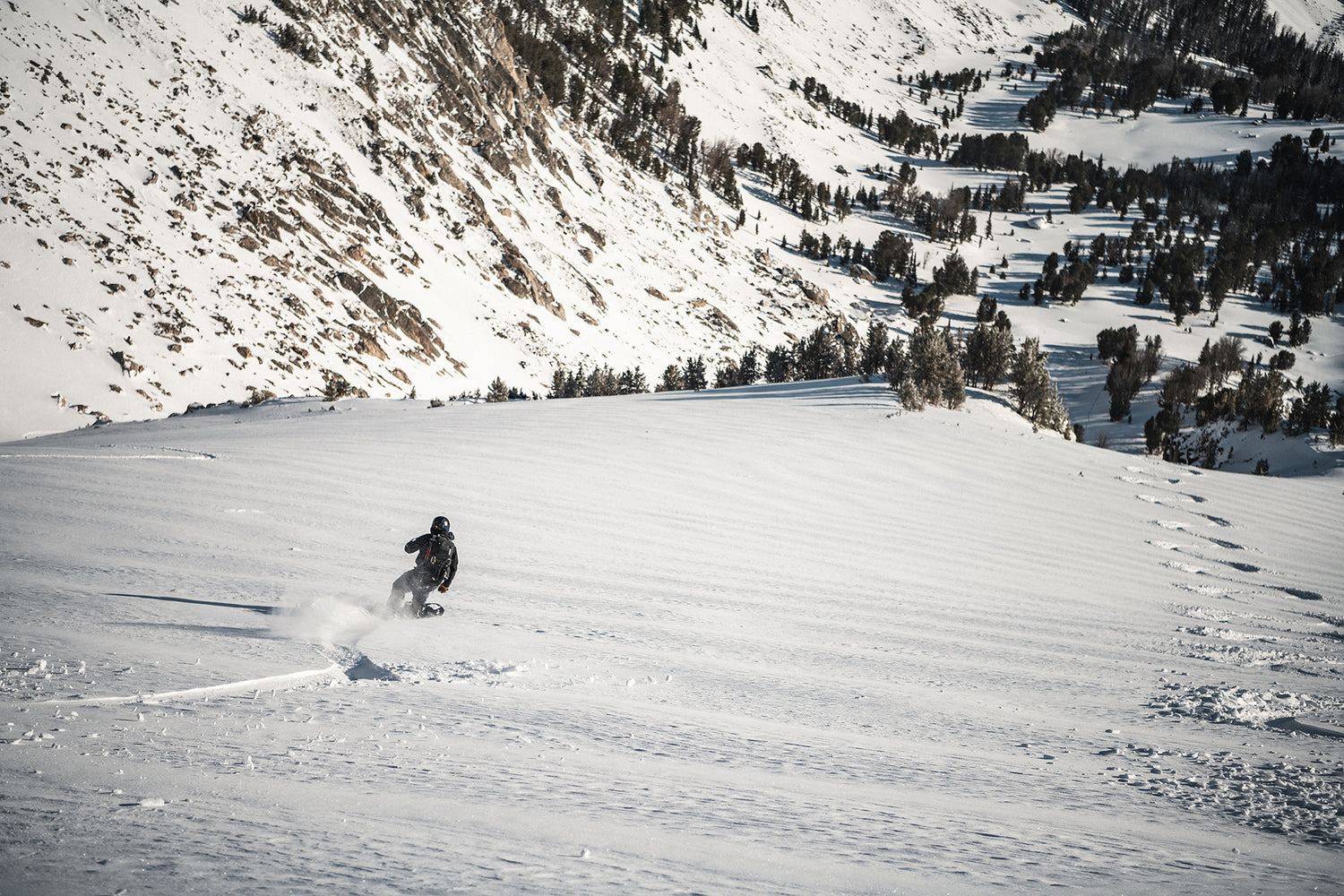I’m not one to flinch from a life of adventure. I think instilling in my kids a sense of spontaneity and wonder is essential, especially when parenting in an increasingly packaged-up, hyper-scheduled, and tech-ruled world.
Putting my children to the test on tougher terrain each year naturally brings out their sense of adventure. One day last year, during the best snow season my children had seen up to that point in their lives, my son turned to me, breathing heavy from navigating several feet of fresh under bluebird skies, and exclaimed, “This is the best day of my life!” As an adventurous parent, there’s nothing more satisfying than that.
But what’s appropriate when you’re constantly curious about what’s over the next mountain? Are there better boundaries? And how do I set an example during my next personal exploration — backcountry splitboarding? This season, I’m about to find out.

After a couple of decades of making safe turns at ski resorts, navigating an adult decision to try backcountry touring for the first time doesn’t come without guilt. Am I demonstrating something dangerous for my children, now 13 and 11? Am I opening an unnecessary can of worms? Do other parents want to explore and rip like me? Who do I think I am?

Well, all that be damned. I’m going for it, just like I did as soon as I knew it was “safe” to come to Colorado and dream bigger. A sense of wonder has always underlined my life. I’ve just taken calculated risks. And backcountry skiing, or in my case splitboarding, is one more choice that’s reminding me of something profound in the process: adventure is ageless.
Backcountry 101: Previewing My Plan
As I gather my first splitboard (a snowboard that splits into two skis for uphill travel), practice changing my bindings and skins (the carpet-like removable strips that allow you to hike uphill on skis), sign up for my first avalanche course, and find my female friends who are into exploring too, I’m giving up guilt a little more with each step.

With wonder comes knowledge. With intentional adventure comes wisdom. I’m hoping to get it all, and in the process have something to show my children that goes beyond the food on the table and rides to lacrosse practice and reminders to brush their teeth. Adventurous women don’t have to lose their identities when “mom” is added to their many titles.
I’ll be reporting on some of my first forays with getting into backcountry splitboarding as a 44-year-old wife, parent of two, and adventure-seeking soul. But for now, here’s my plan, my calculated risks. Maybe you’re having the same dreams — and doubts. I hope you’ll come along for the ride.

Know my limits. I’m a strong resort rider but have had more than a few freak-out moments in 5-foot deep powder while my feet are strapped to a board and my leverage is waning. My kids can attest to one incident at Wolf Creek Ski Area, where I said out loud, “I think we might die.” Not a good parenting moment. I’m hoping to learn how to stay calmer and cooler in the backcountry, and even in the front country when they drop the ropes where no one’s been before.
Secure good gear. As a gear reviewer, I’m a little spoiled with access to top-of-the-line options like Weston’s Riva splitboard and the forthcoming Eclipse. But with something as potentially dangerous as an avalanche, I would never mess around with sketchy gear in the backcountry.
Get educated. I’m going to follow Weston’s recommended “course load,” which includes a Backcountry 101 class at an outdoor store in Denver, where an expert goes through the gear with me. I’ve also signed up for an all-women 102 on-snow course up in Breckenridge, Colorado, followed by the biggie —a three-day AEIRE (American Institute for Avalanche Research) course to learn all the technicalities of snow stabilization in the backcountry.

Practice weekly. One of my main motivators for getting into splitboarding is not just to avoid the hassle of resort skiing traffic or explore the vastness of backcountry terrain, but to get a good workout. I’m constantly looking for alternative endurance training options, and skiing uphill is tough stuff. Luckily, there’s a one-chair ski hill 15 minutes from my door. So during weekday night skiing, I’m dropping the boys in the terrain park while I get in some splitboard laps.

Travel widely. Exploring new terrain within the safer confines of ski areas around the West has instilled a sense of adventure among all my family members. This year we’re maxing out our Ikon pass with trips to Utah’s smaller ski areas like Solitude, plus local favorites Aspen and Steamboat Springs, and hopefully a spring road trip to Jackson Hole. Aspen is quickly becoming the uphill capital of America, and I’ll be testing my splitboard there among the locals.
Wonder on. I see backcountry splitboarding as a way to push myself physically and mentally and to acknowledge that adventure will always have a place in my life. When my kids come to me and ask when they can try backcountry skiing, I’ll have an informed answer. I’m just working on what that will sound like.

